Creating a ‘Nicotine-Stained’ Homage to the ’70s in ‘Daisy Jones and the Six’
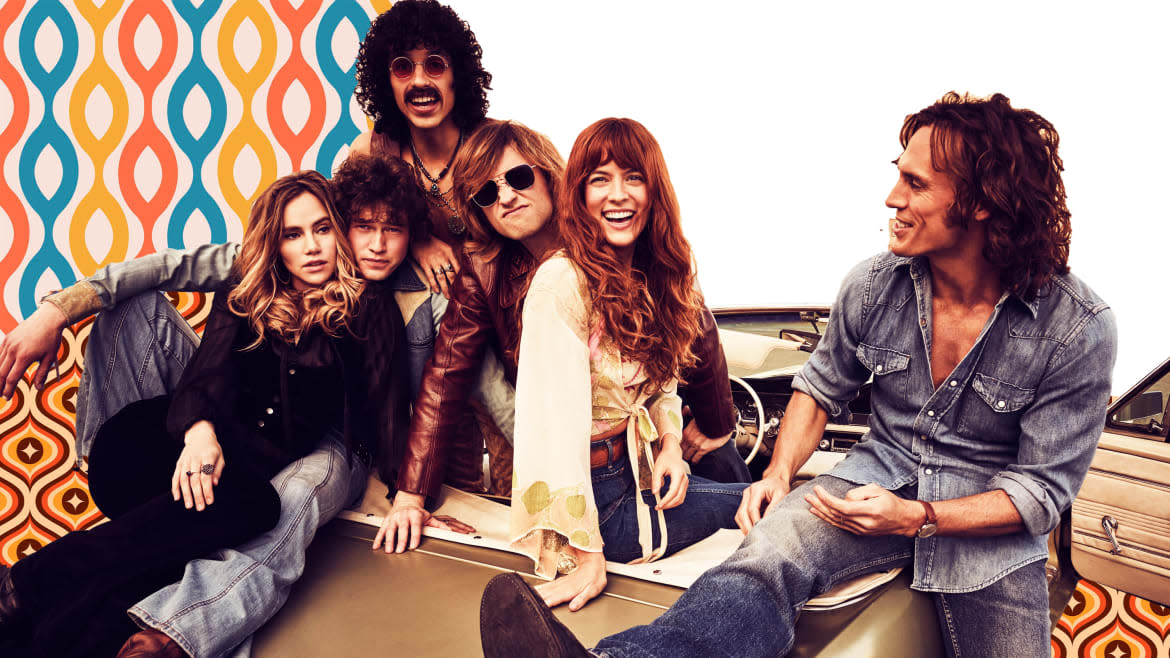
Daisy Jones & The Six drops us headfirst into the gritty and glamorous world of 1970s rock’n’roll. Out of a storm of drugs, cigarettes and booze comes the thrilling creation of musical masterpieces.
The Prime Video series, which premiered its first three episodes on March 3, is as addictive as its subject matter. Based on the novel by Taylor Jenkins Reid, which is written in the style of an interview with the group and their cohort, Daisy Jones tells the story of a fictional band (based loosely on Fleetwood Mac) and their rise in the ’70s. At the heart of it all is Daisy (Riley Keough), a charismatic yet flawed singer, and Billy (Sam Claflin), the band’s equally tortured frontman. Much like the world they operate in, their love is just as toxic as it is intoxicating.
‘Daisy Jones & the Six’ Is the Fleetwood Mac Greatest Hits Phenomenon We Crave
To bring this sumptuous world to life on screen, production designer Jessica Kender dedicated herself to authenticity, meticulously recreating the Sunset Strip of the ’70s and designing a full-scale ’70s rock tour, complete with historically accurate scaffolding and period lighting fixtures.
The Daily Beast spoke to Kender about her diligent approach to emulating the show’s time period and how the characters’ bohemian creativity echoes across Daisy Jones’ set design.
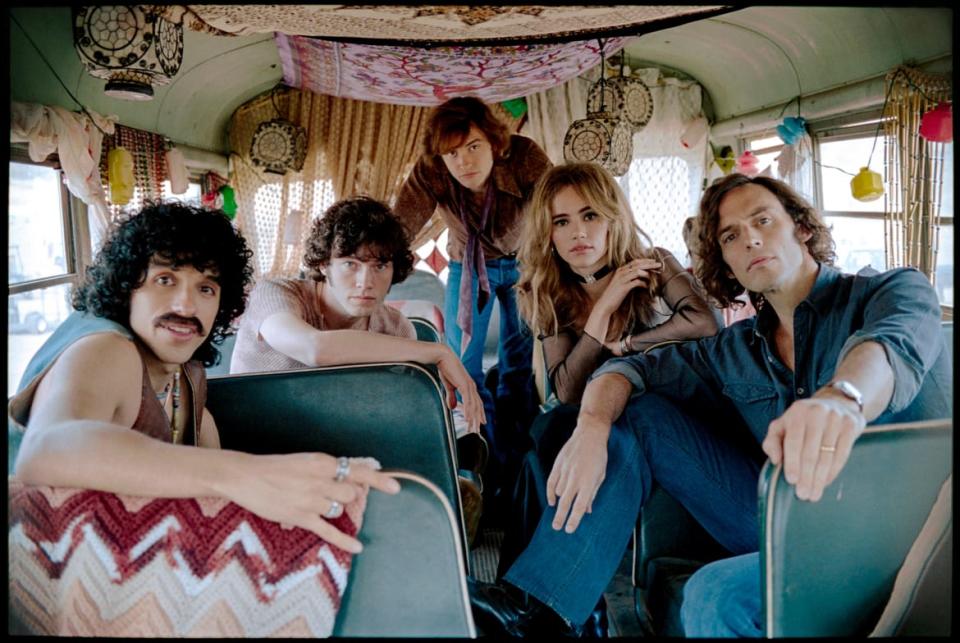
This interview has been edited and condensed.
How did you get involved with the TV show?
I’ve always felt like I was meant to be in the ’70s! Lauren [Neustadter, an executive producer on the show] from Hello Sunshine said to me, while we were doing Little Fires Everywhere, “What do you think of the ’70s? I think I have our next project. You need to read this book.” As soon as I read it, I was like, “Who wouldn’t want to do this?” From a design standpoint, it’s everybody’s dream. I find that a lot of designers want to do stuff that is super period—you know, ’20s or ’40s—but for me, the ’70s is my dream period.
How did you begin finding inspiration and influences from the period to use for the show?
We started with the Sunset Strip. We knew the goal was to actually shoot it on the Sunset Strip itself. We made this massive binder because we were going to be there in two time periods—the early ’60s, when Daisy is first getting into the scene, and then when the band comes back.
This binder showed pictures from ’68, ’73, and then also from today. It became this flipbook of, “Here’s what it was, here’s what it is now.” That binder was the start of everything, because our goal was to keep it real. When you’re constantly looking at this book over and over and over again, reality becomes the inspiration.
Making the Band: How Daisy Jones & the Six Came to Life
The show feels wonderfully authentic to the era, but it’s also kind of magical and darkly beautiful.
I definitely talked with the [directors of photography] about how we were trying to show the glamor of rock’n’roll, but we were also trying to show the side where everything fell apart—the drugs and the alcohol. So, everything is slightly nicotine-stained, but you also want to be them or be near them.
One thing we didn’t really want was to go for the Austin Powers ’70s—you know, the kind of mod ’60s-to-’70s. I wanted to push the psychedelics of the ’70s, so our color palette is so much more muted. It is obviously glamorized, because it’s the rock life. And it’s a pretty show to look at, but we didn’t want to push it into campy territory.
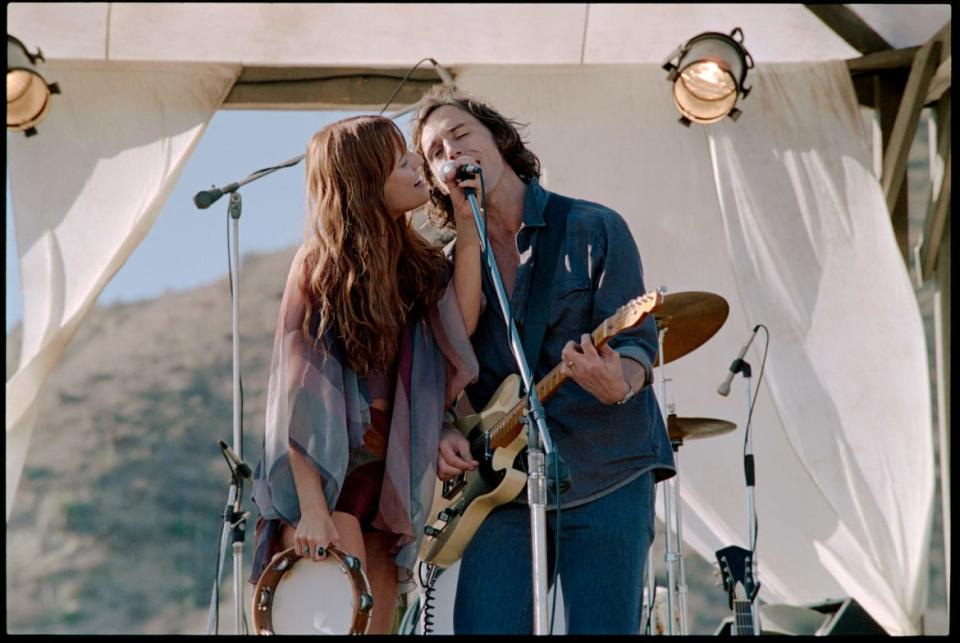
Tell me about the challenges that came with designing, building, and shooting a national rock tour.
I have a friend who does concerts, current concerts. Like, he traveled with Jay-Z and Bon Jovi. He was someone that we were bouncing stuff off of. What I learned is, real rock bands start in theaters, then go to arenas, then go on to stadiums. The way that rock shows are set up is you just play that one type of venue. We had to condense what would be three different tours into one tour, essentially, so that you could see that growth.
One of the first things we started out asking was, “How do we make this show that would have been designed for just one venue look like it makes sense over three totally different types of venues?” There’s one scrim behind the band all the time and the big circular “Daisy Jones” [logo]. We started looking at those oil gels that they would do on lights that sort of spin around, and that’s where the idea of the backdrop came in. And then I wanted this disc, because I kept seeing this imagery repeated in ’70s shows.
Because it’s a TV show, not a real concert, so much takes place backstage. Just having the stage split into the front and back didn’t seem right. I was talking with Brian [Grego], my supervising art director, and he said, “If we do the backdrop as a scrim, then whenever they have the drama backstage, we can see the band still playing, silhouetted. We’re not just up against a dark wall.” Billy and Daisy have a scene in the final episode [backstage], and you can see the highlights of the arena behind them. That, to me, was when we really sort of won with the design. That was the most exciting part.
We tried really hard to be authentic. A lot of the lighting equipment is period. When we did the Soldier Field concert, we hired a company in Pennsylvania, which is one of the last companies that has the period scaffolding that they built stages with.
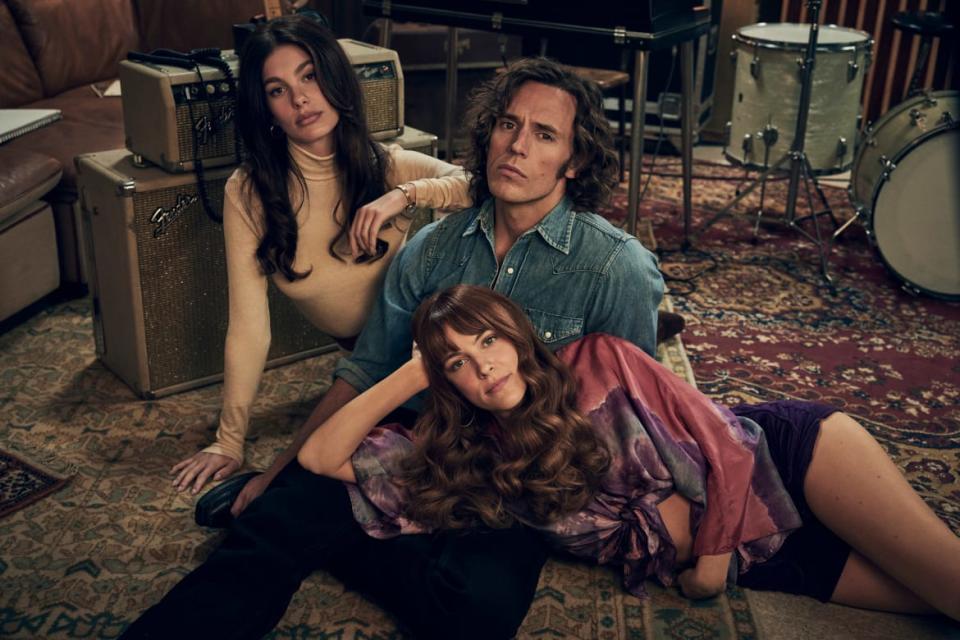
The band’s first house in LA feels like the perfect makeshift home for this makeshift family. Where did you find that location?
This one was a little tricky, because it was so specific. We needed this back house for Billy and Camila. We shot all the interiors of the big house on location, but Billy and Camila’s interiors on [a soundstage]. We searched for that house for months, and when we finally landed on it, we essentially repainted the entire thing. The whole driveway was asphalt, so we brought in tons of dirt, so it feels really like Laurel Canyon. We were prepping that house for three months to get it to where we wanted.
I particularly loved Camila [played by Camila Morrone] and Billy’s little house in the back garden. You got the sense that she had made a lot of effort to add personal little touches. How did you approach creating that home-y bohemian living space?
It’s at the time in their relationship where everything is going well, so we wanted to really make it into this super-warm place. You can understand why, even though they have this huge house next door, the band go into this little house next door to hang out.
We did a lot of little things in there. On the doors, we painted these tiny little murals, as if Camila had painted on the doors. We put up what we imagined were Camila’s favorite books—and all the books are collected from a thrift store, so none of them are in great condition. Then our decorator Lisa [Clark] found all of these vintage posters to put up of people they want to emulate or people they love. We tried to also pull in stuff from the time period that was big that you would put up if you were that age. You’ll see a lot of macrame, layers upon layers of fabrics, the bed on the floor. It’s all showing that they don’t have the money yet, but it also sort of feels like a little nest.
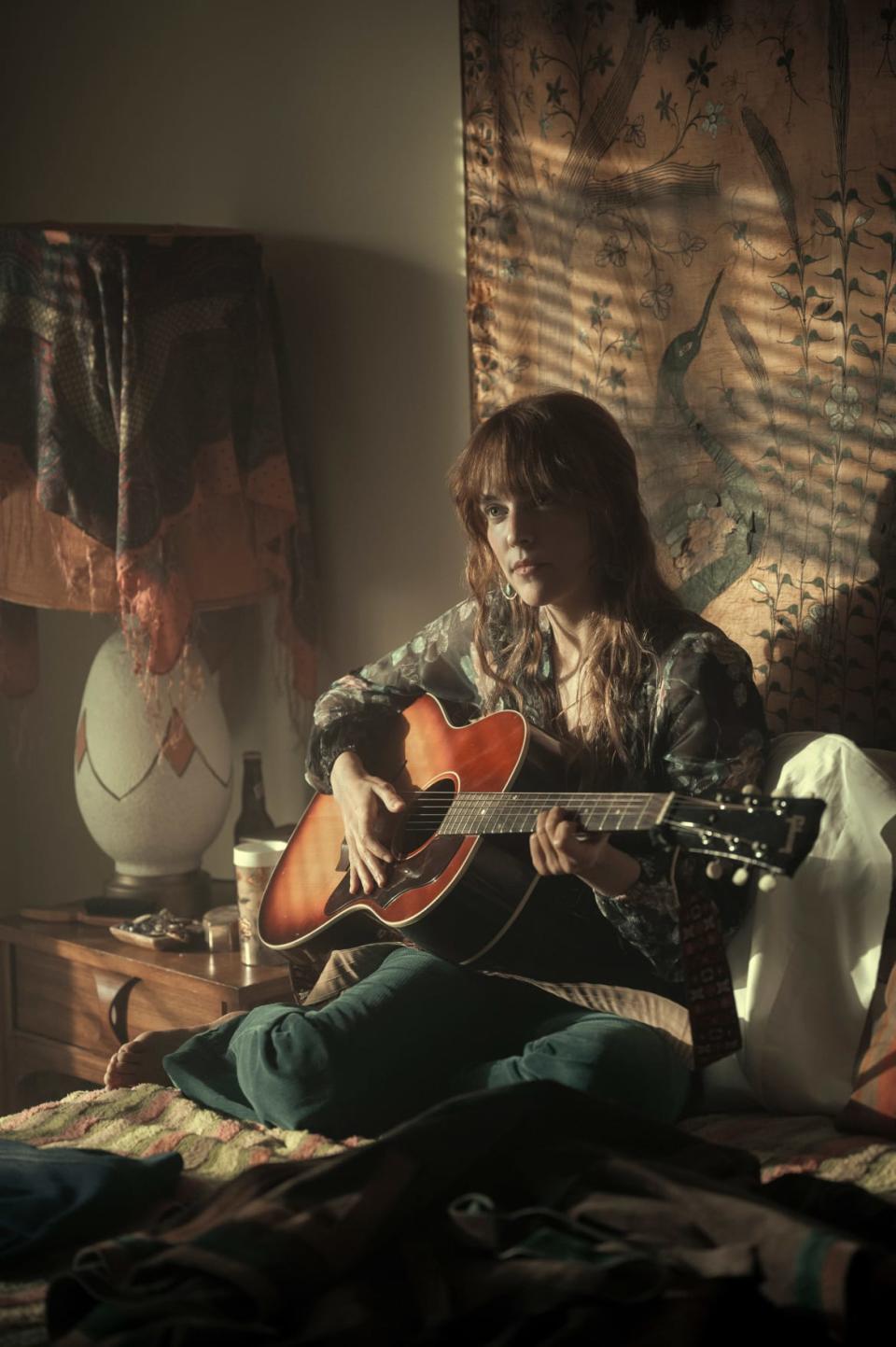
The band’s first tour bus is also so incredibly detailed and filled with character. What was your approach to creating that space?
Originally it was just going to be a normal bus. James [Ponsoldt], the director, had asked if we could do a school bus. And I remembered way back when I was working on Dexter, the craft service was served out of a yellow school bus that had been totally painted over. I went to my graphic designer, and he designed each of the sides of the bus sort of perfectly.
There’s actually like a little Easter egg in there. I had just been working on Little Fires Everywhere, and there’s this kid in the show who is an artist, and she paints her bedside table. We put that original art on the bus, because that was my start with Hello Sunshine.
What was great was that all of our painters painted the bus on the lot, so when the actors would come by, they would see the bus being painted. Even though we wanted to stick to reality, that bus is one part that’s a little over-the-top, so everyone would get very excited when they walked by. We gave the painters elevations [sketches] of each side of the bus, but I was like, “Look, if you have a good idea, put it in there.” That’s the way that it was with these Bohemian hippies. Everybody added their own ideas.
The decorator for the inside of the bus was a woman named Andi [Brittan]. She pulled so many great vintage fabrics and just got in there and went nuts with it. She was like, “I want the entire inside to feel equally as evocative as the outside.” They were stapling stuff up, putting up fringe, taping branches on the wall. It was great.
It sounds like the production design became its own little artsy bohemian family!
I think it did, for sure! On certain sets, you need more control, because they’re incredibly specific. In this case, having everyone’s ideas come together and taking that input just made it look more authentic. And it’s super fun!
Get the Daily Beast's biggest scoops and scandals delivered right to your inbox. Sign up now.
Stay informed and gain unlimited access to the Daily Beast's unmatched reporting. Subscribe now.

 Yahoo News
Yahoo News 
